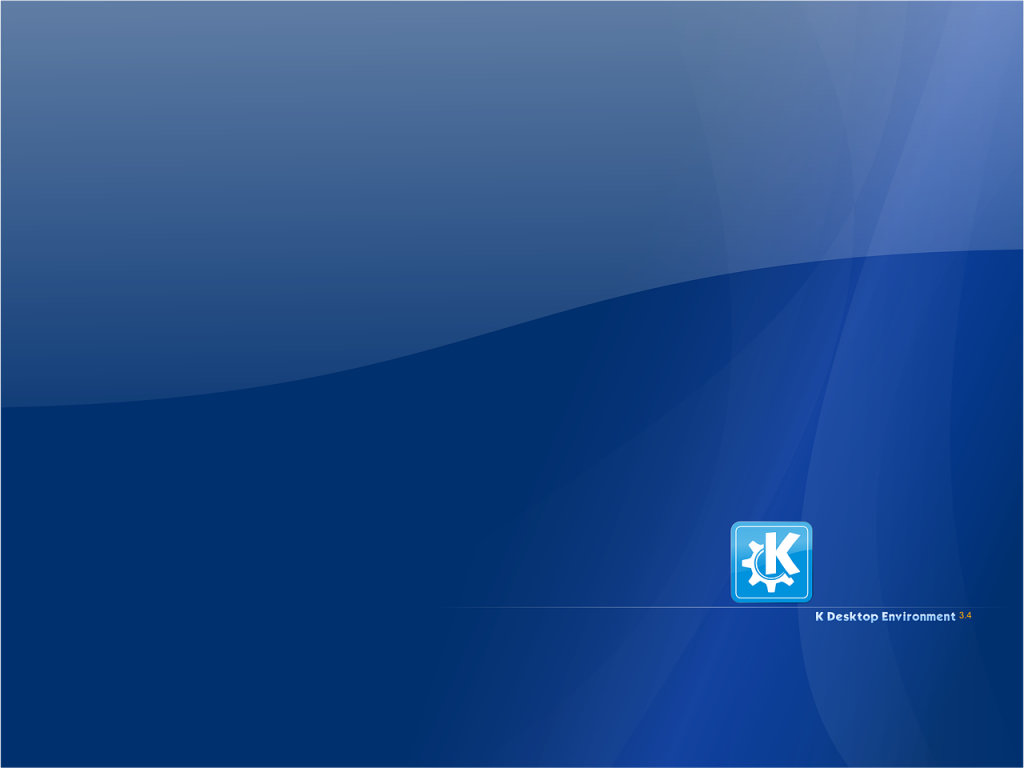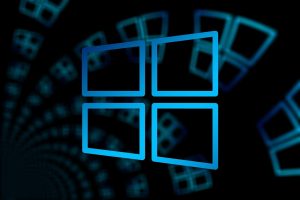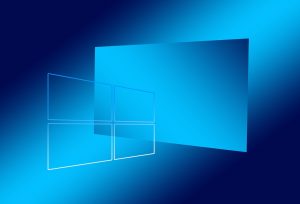The Top Operating Systems for Business Use

An operating system (OS) is one of the most fundamental pieces of software required to run computers and devices. For businesses, choosing the right OS can have major implications for functionality, security, cost, app availability, and more. The top operating systems used in business environments today include various versions of Windows, macOS, Linux, Chrome OS, Android OS, and iOS. Each has its own strengths and weaknesses when used in workplaces. Evaluating the tradeoffs can help businesses select the best options for their needs.
Windows in the Enterprise
Windows remains the most popular desktop operating system overall, with over 70% market share. Many businesses still rely on Windows because it is familiar, runs key software like Office, and offers backward compatibility. The current version for enterprise is Windows 10, which Microsoft launched in 2015 and plans to support until 2025. Windows 10 provides a balance of usability, security, management tools, and support for modern hardware. Key strengths as a business OS include:
• Support and infrastructure – As the market leader, Windows has a vast ecosystem of developers, compatible peripherals, trained IT staff, and infrastructure. This makes implementation and support easier for most businesses compared to lesser-used OS options.
• Business-centric features – Tools like Active Directory, Group Policy, BitLocker encryption, and Hyper-V virtualization provide businesses robust options for security, user management, and deployment. Microsoft also offers simplified “Windows 10 Enterprise” versions designed specifically for commercial needs.
• Application compatibility – The vast majority of business software is designed to run on Windows first, so companies are less likely to experience compatibility issues. Everything from custom internal apps to Office functions best on Windows environments.
• Cost – While not free, Windows licensing costs are very reasonable for the enterprise capabilities delivered. Volume licensing deals with downgrade rights also provide flexibility.
Potential downsides to Windows include relatively higher hardware requirements, sizable updates that refresh the OS every few years, and a larger attack surface for malware. But for many organizations, especially those with an existing Windows infrastructure, remaining on Windows is the simplest path forward. And Windows 11, launched in 2021, promises even more security and features optimized for hybrid work when companies are ready to upgrade.
macOS for Media, Design, and Flexible Work
Although Windows dominates traditional enterprise IT, Apple’s macOS has carved out a niche in some businesses, especially creative industries. The current version, macOS Monterey, accounts for around 15% of the desktop OS market share. Reasons businesses provide Macs to employees include:
• Appeal for creative staff – Artists, designers, architects, and media creators often prefer macOS and Mac hardware. Supporting these user preferences can improve hiring, retention, and productivity. macOS also shines when working with content creation apps like photo/video editing, music production, graphical design, publishing, and animation software.
• Flexible work enablement – macOS integrates beautifully with iPhones and iPads, allowing more fluid remote work. Employees can handle tasks asynchronously across devices. Mac laptops like the MacBook Air and MacBook Pro also provide ample power in slim, premium hardware that travels well.
• Intuitive user experience – The macOS user experience tends to be very clean and intuitive compared to Windows. For less tech-savvy employees and those doing more basic tasks, Macs require less training and support.
• Security and stability – Key security features like encrypted storage and firmware, rapid patching, and App Store vetting help keep Macs safe with little IT overhead. The Unix foundation and control over hardware/software also provide stability benefits.
Downsides can include much higher hardware costs, greater effort integrating with existing Windows infrastructure, and potential compatibility issues running niche business apps. But for design-centric roles, executives, mobile professionals, and technology early adopters, macOS can be a smart business choice.
Chrome OS Flexibility and Cloud Integration
Chrome OS by Google is a lightweight operating system designed primarily for Chromebook hardware. Chrome OS only accounted for about 2% of the OS market in 2022. But it deserves consideration for businesses embracing cloud computing, remote work, and workstations rather than traditional PCs. Benefits for business include:
• Cloud-first functionality – Chrome OS is built on Google’s Chrome browser. It excellently leverages cloud-based apps like G Suite, Office 365, and SaaS solutions. This enables secure access from anywhere with an internet connection.
• Lower hardware requirements – Chrome OS devices use less processing power, memory, and storage. Chromebooks can drive down costs substantially compared to Windows and macOS devices with similar build quality and battery life.
• Centralized device management – Business versions of Chrome OS integrate nicely with management consoles like Google Workspace. IT admins gain visibility and control over devices and policies.
• Auto-updates and security – Chrome OS centralizes OS updates, security patches, malware protection, encrypted data, permissions, and more without interrupting employees. This eases the update burden on IT teams.
Tradeoffs include reliance on consistent internet connectivity, limited offline functionality, moderate Android app compatibility, and immature support for niche business apps outside of the Chrome Web Store. But Chrome OS warrants consideration as a lean, secure, cloud-based OS option for tasks like business communication, document editing, email, and basic SaaS app usage.
Linux for Specialized Apps and Servers
Unlike the mainstream desktop OS options, Linux is actually a broad family of open-source operating systems. In the enterprise, Linux sees the most adoption on servers, websites, appliances, and other infrastructure in data centers and clouds. The security, stability, flexibility, cost savings, and performance of Linux distributions like Red Hat Enterprise Linux (RHEL), SUSE Linux Enterprise Server (SLES), and Ubuntu Server make them a staple of backend business computing.
Additionally, Linux plays a niche role on specialized workstations running scientific, mathematical, creative, and development applications. For example, animators may use Ubuntu Linux machines alongside Windows and macOS peers due to Linux stability and support for niche tools. And Linux is ubiquitously embedded into all types of appliances and devices beyond servers, from TVs to cars.
Consider Linux for infrastructure upgrades, highly specific workloads, and environments where open control, customization, containerization, and virtualization are priorities. It empowers very customized deployments, but typically requires more Linux expertise compared to commercial OS products.
Mobile Operating Systems
Today’s businesses also require decisions around operating systems for mobile devices and remote work beyond the desktop. Smartphones and tablets running Apple’s iOS and Google’s Android OS enable workforce mobility and flexible work locations. Key considerations include:
• iOS – Apple’s intuitive, consistent user experience across iPhone, iPad, and Mac devices enables easy integration and fluid remote work. Tight control over hardware and software also allows strong security measures like encrypted data, App Store vetting, and rapid patching. But iOS device costs are higher, options are fewer, and customization is limited compared to rivals.
• Android OS – Dominant worldwide mobile OS market share makes Android devices far more affordable with wider variety. Android offers more flexibility for custom apps and OS modifications compared to iOS. But the openness increases malware risk. Fragmentation across device makers also complicates OS updates and long term support compared to Apple’s unified iOS roadmap.
In many businesses, supporting both iOS and Android devices is prudent based on user roles and preferences. Ruggedized mobile devices running either OS also bring additional reliability and capabilities for field service and specialized use cases. And emerging operating systems for foldable devices, wearables, and IoT networks warrant monitoring as employee mobility and endpoint diversity increases.
Key Evaluation Criteria
Given the range of options now available for desktops, mobiles, servers, and more, businesses must evaluate multiple criteria to select optimal OS solutions:
• Workflow support – Audit what tasks and apps employees require to determine cross-platform compatibility demands. Prioritize OS choices that smoothly support daily work over theoretical capabilities.
• Security – Evaluate vulnerability history, encryption strengths, patch reliability, and access controls to gauge risks. For example, Chrome OS separates work and personal spaces, while iPhones have leading hardware security.
• Management complexity – Determine how easily IT teams can deploy, update, and manage each OS with available enterprise tools. For example, Windows provides robust policy controls, while Chrome OS focuses on simplicity.
• Support costs – Factor both direct software/license expenses and indirect IT support/training costs over the planned lifecycle of devices and OS versions. Consider total cost of ownership.
• User experience – The best security and management capabilities matter little if employees struggle with convoluted software. Prioritize approachable interfaces and mobility.
By balancing these technical and human factors, IT leaders can optimize satisfication for employee effectiveness and organizational efficiency.
Hybrid Strategies Emerging
Rather than attempting to standardize on a single OS across all users, an emerging best practice is embracing hybrid environments. A mixed OS approach provides the “best tool for the job” while limiting interoperability pains through shared cloud infrastructure. Personas like designers, executives, mobile professionals, developers, and desktop power users may each benefit from tailored Apple, Microsoft, Google, or Linux OS selections.
Supporting choice ultimately allows businesses to meet diverse needs while focusing IT resources on critical security, compliance, and workflow maintenance. The rise of remote work and bring your own device (BYOD) policies is also driving more heterogeneous environments. As cloud platforms, web apps, and mobile computing mediate OS barriers, the costs of multi-OS support decrease.
Of course, some basic OS standardization and consolidation is still advised where practical to optimize licensing discounts, staff training, and hardware/software compatibility. But strict homogeneity is fading in favor of inclusive diversity.
The Future of Business OS Adoption
Looking ahead, analysts expect Windows to retain its enterprise throne for the foreseeable future, though likely with a steadily declining share. macOS and Chrome OS shape up as the top alternatives for business niches thanks to strong security postures, modern interfaces, and leading hardware. Chrome OS in particular stands out as a potential growth candidate across basic business devices.
On mobile fronts, iOS and Android will continue dominating phones and tablets given their advanced capabilities and app ecosystems versus rivals. Supporting both remains important, though iOS-only shops are viable for companies standardized on Apple devices. Meanwhile server-grade Linux will continue dominating critical infrastructure and cloud backends globally given its flexibility, performance, stability, and cost profile.
Wildcards remain for potential contenders in desktop and mobile arenas currently lacking momentum but backed by major players. For example, Google Fuchsia OS aims to eventually consolidate Chrome OS and Android using microkernel and capability-based security models. Early Fuchsia prototypes suggest promising potential. Additionally, Samsung’s Tizen OS and desktops like Kasm Workspaces or JingOS could see expanded roles.
Of course, radical innovation could also broaden or displace categories entirely, especially as augmented reality, brain-computer interfaces, and quantum computing evolve. But in the nearer term horizon, refinements and convergence around Windows, macOS, Chrome OS, Linux, iOS, and Android seem most realistic.
Rather than bet on a single OS option, astute IT leaders avoid lock-in by preferring platform-agnostic solutions. Prioritizing web apps, cross-platform SaaS services, and mobile-first designs over native platforms brings flexibility. As operating systems come and go, businesses can swap the underlying technology without derailing workflows. This future-proofs organizations against disruption.
Conclusion
Selecting the right operating systems requires balancing security, functionality, usability, mobility, and other factors while avoiding unnecessary complexity that strains IT resources. For most large businesses, adopting Windows, macOS, Chrome OS, Linux, iOS and Android in a hybrid model based on use cases and preferences provides the best path. Relying on cloud services and platform-neutral software also future-proofs the organization. With AI and automation improving cross-platform interoperability and unmanned maintenance, blended OS environments serve emerging business computing needs without sacrificing stability or control. The coming rise of hyperautomation and autonomic systems should further ease any residual challenges of multi-OS environments. By leveraging each OS’s strengths while centering workflows around diverse users, businesses can remain agile and competitive even as operating systems continue evolving.








